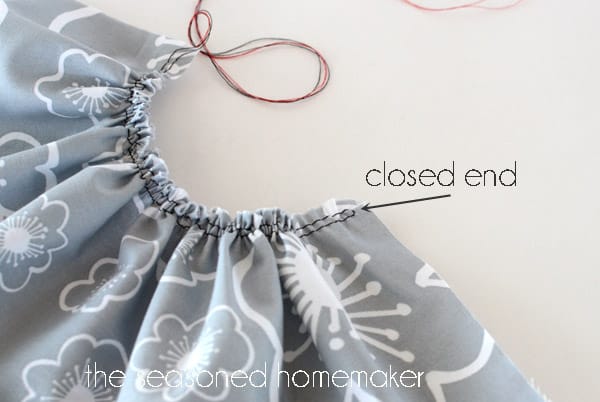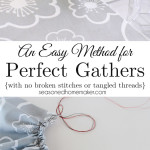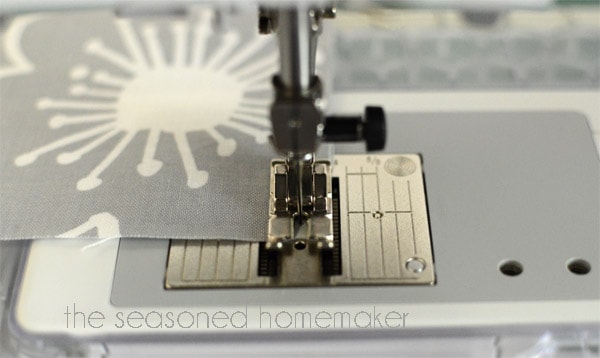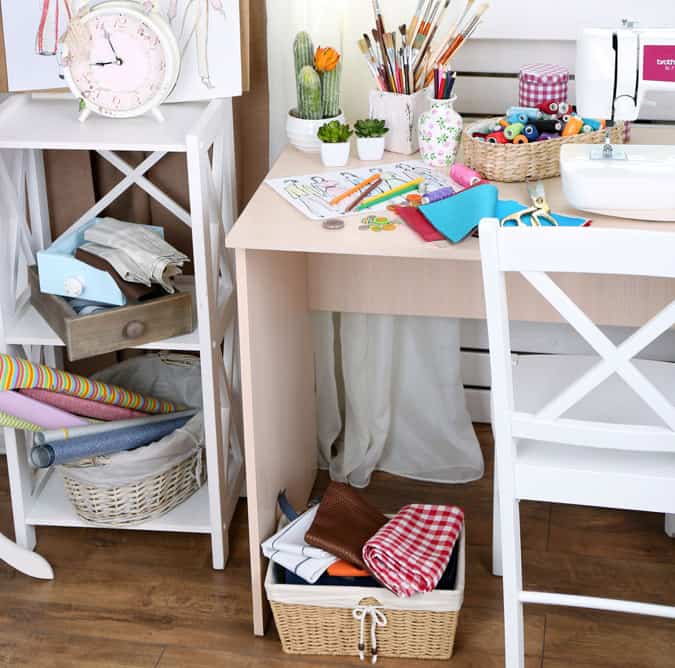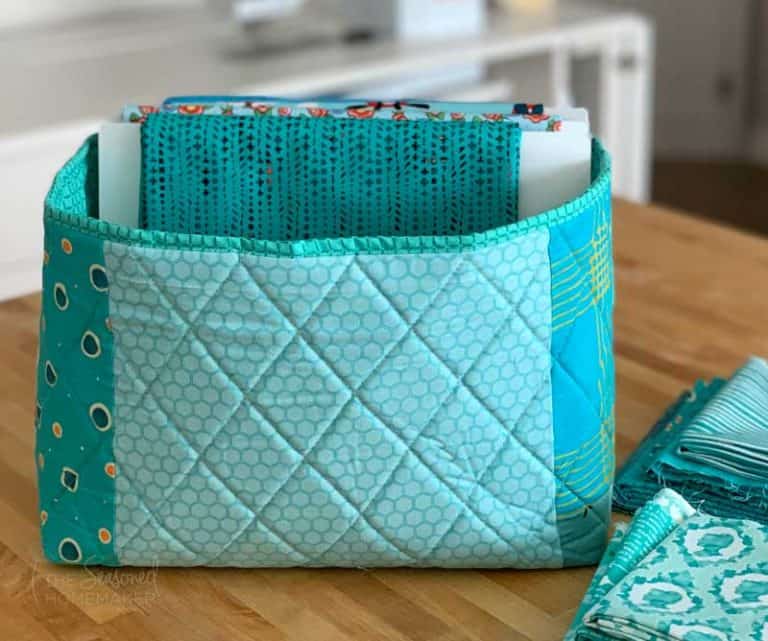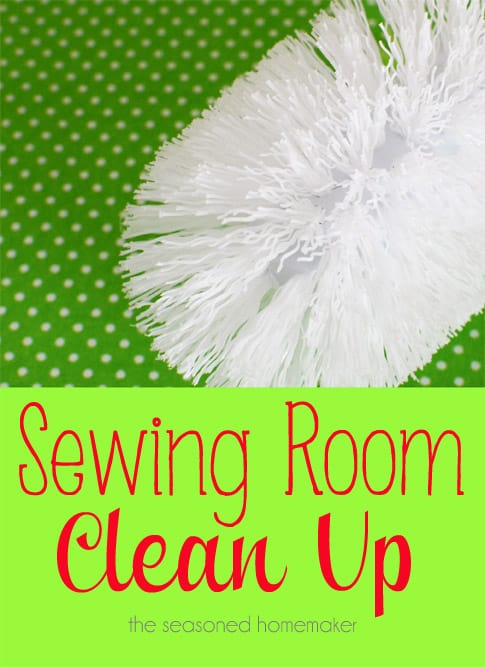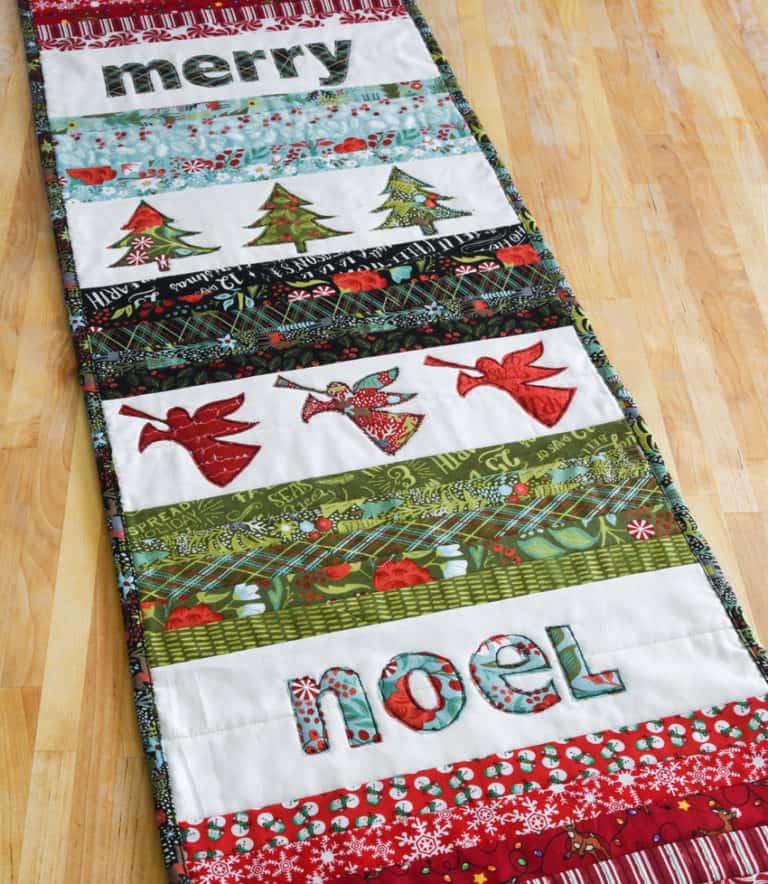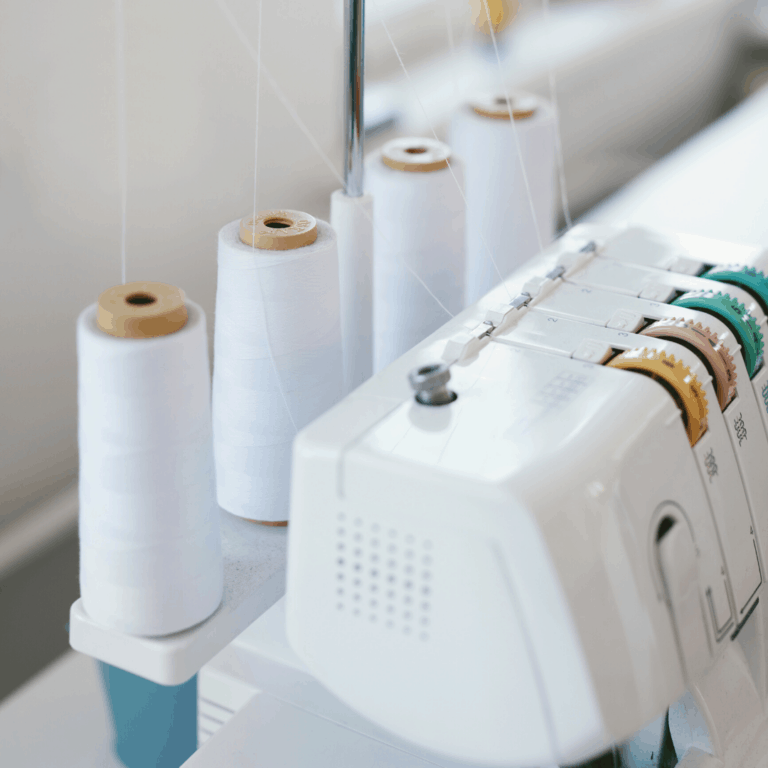How to Gather Fabric and Make Ruffles
This post may contain affiliate links which won’t change your price but will share a commission.
Ever want to know the secret of How to Gather Fabric or need to know How to Make Ruffles.
A few weeks back I did a post on How to Gather Fabric with a Serger. Today, I’m going to show you a fail-proof method on how to gather fabric using any sewing machine.
Soon, you will be adding ruffles to everything.
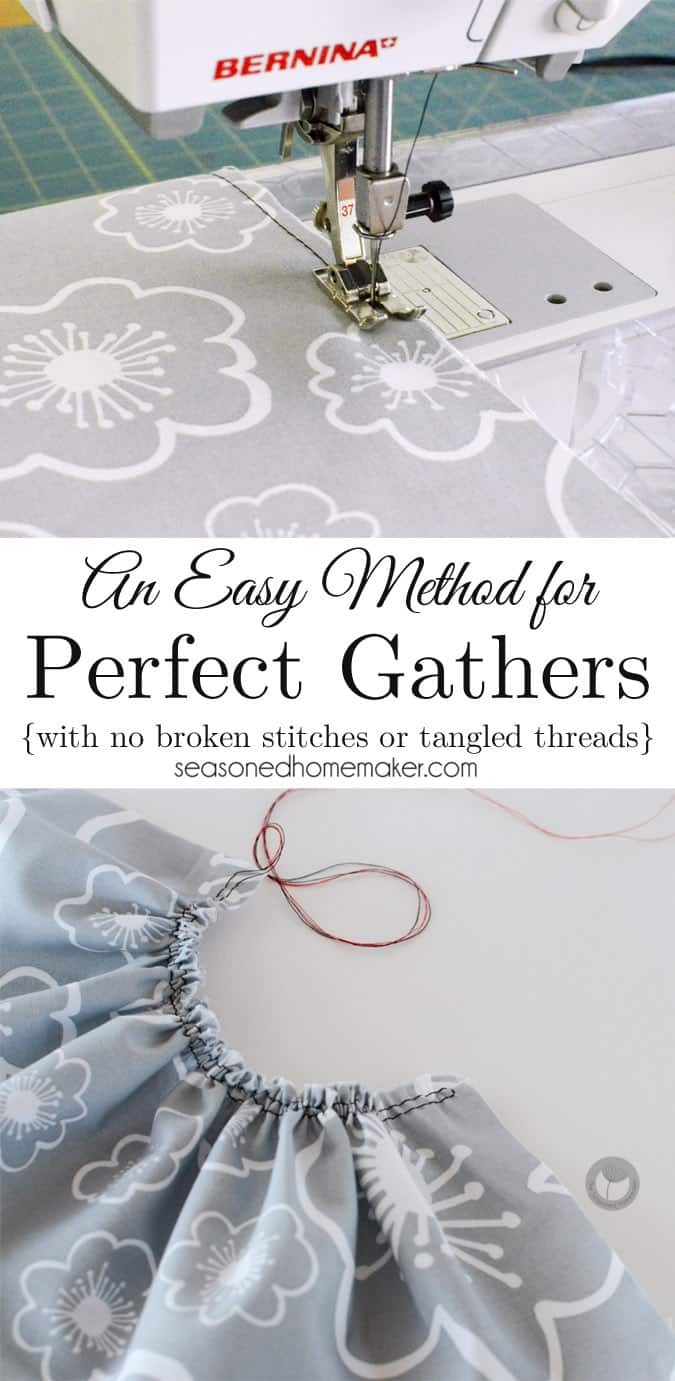
Gathering fabric couldn’t be more basic to sewing. It is essential to know how to gather if you want to sew ruffles. Gathered fabric adds fullness to sleeves, necklines, ruffles, aprons, pillows, and any number of other sewing projects.
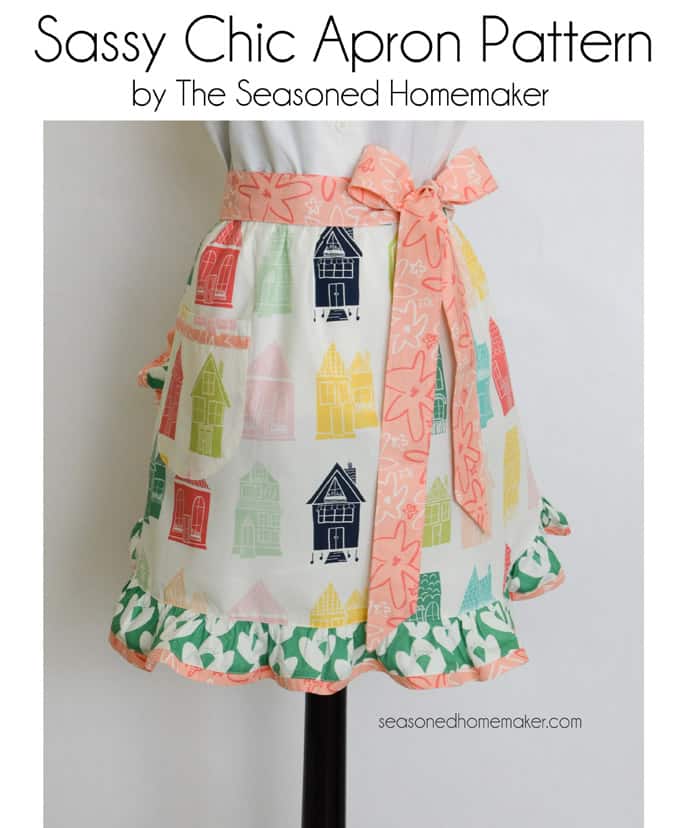
Before I learned about gathering on a serger, I hated gathering. I had learned the standard method that has you set the machine on the longest stitch and sew two parallel lines.
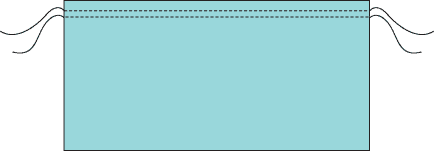

This method can be a little problematic. The reason: either the thread breaks or gets knotted when pulling up gathers. I have been known to entirely pull the thread out and have to start over again. This method makes it hard to get nice, even gathers.
I have tried to outsmart the gathering genies by using a gathering foot to make ruffles {too much trouble}. I have tried using a ruffler to make ruffles {too much math}.
Recently, I was chatting with my Bestie and she described a gathering technique she had seen in a recent sewing class. I was instantly reminded of having seen this demonstrated a while back and forgotten all about it. So, no more keeping this tip hidden away.
How to get perfect gathers every time.
Step 1: Change the stitch length on your machine.
Set your machine to the longest stitch length. My machine has a default stitch setting of 2.5 mm and the longest stitch length is 5 mm.
Step 2: Use a different colored thread in the bobbin.
This might seem odd, but it reminds you which thread is your bobbin thread. When you pull up the gathers you will thank me for this one. For this demonstration, the bobbin thread is red and the needle thread is black.
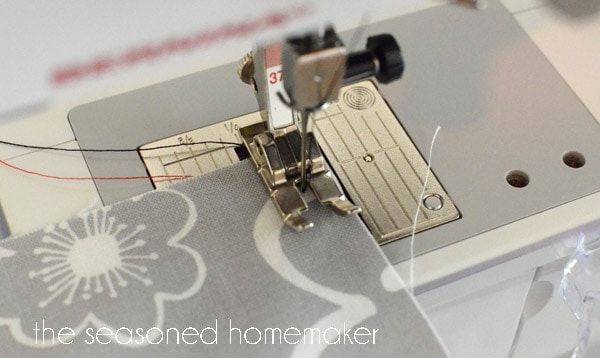
Step 3: Sew a straight stitch 1/4″ from edge of fabric.
Most machines are marked with a 1/4″ seam allowance. Use this as your guide.
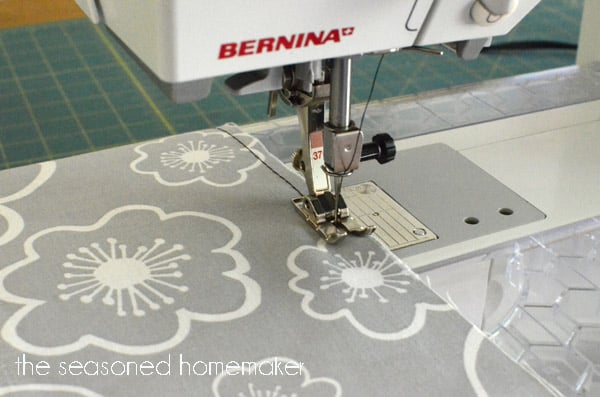
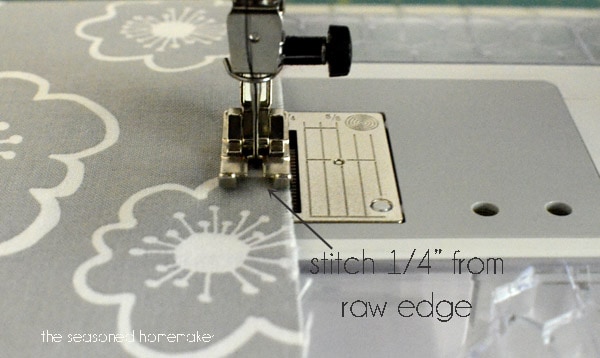
Step 4: About 1/4″ from the end, stop and drop the needle into the fabric.
You will need to guess-timate on where to stop. Try to get as close to the end as possible without getting off the fabric.
Step 5: Raise the presser foot and pivot the fabric to the right.
If you’ve never done this, it is very simple. While your needle is dropped into the fabric and the presser foot is raised, carefully pivot the fabric to the right. The bottom edge of the fabric will now be on the right.
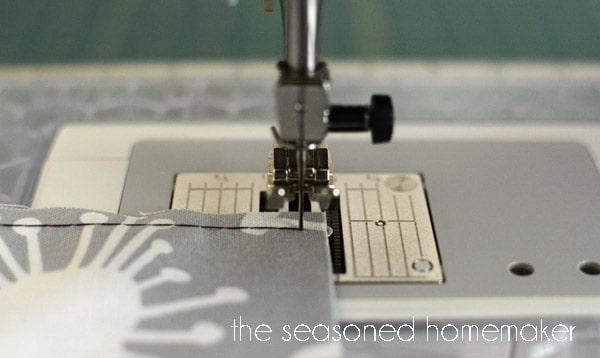
Step 6: Lower the presser foot and take 1 stitch.
That’s right, take ONLY 1 STITCH. One.5mm.stitch.
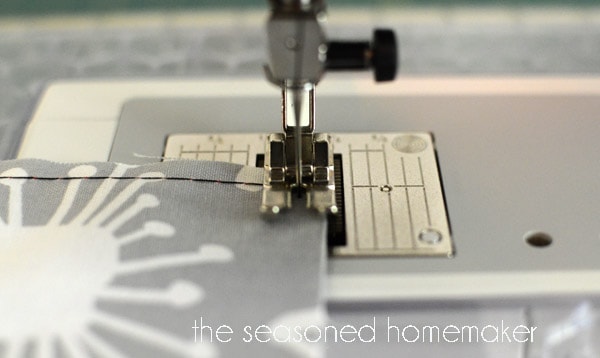
Step 7: Drop the needle into the fabric again and raise the presser foot.
After taking 1 stitch, drop the needle into the fabric like you did in Step 4. Once the needle is in the down position, raise the presser foot.
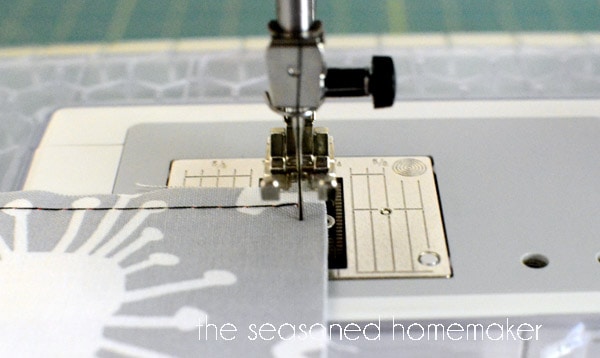
Step 8: Pivot the fabric to the right again.
With the presser foot raised, pivot the fabric to the right again. Just like you did in Step 5. You will now be ready to sew a line parallel to the first one.
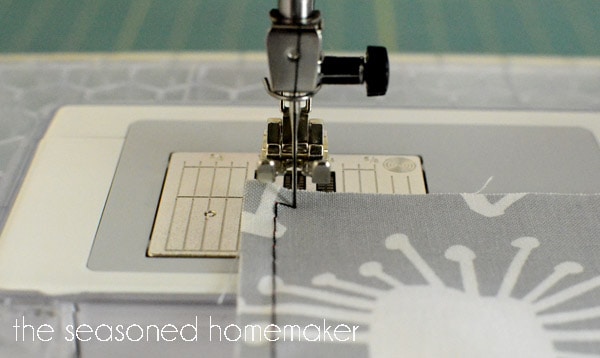
The second gathering line will now be exactly 5mm from the first one and the end will be closed. This makes the stitching line 3/8″ from the raw edge. Since most seam allowances are 5/8″, the gathering threads won’t get into the seam allowance.
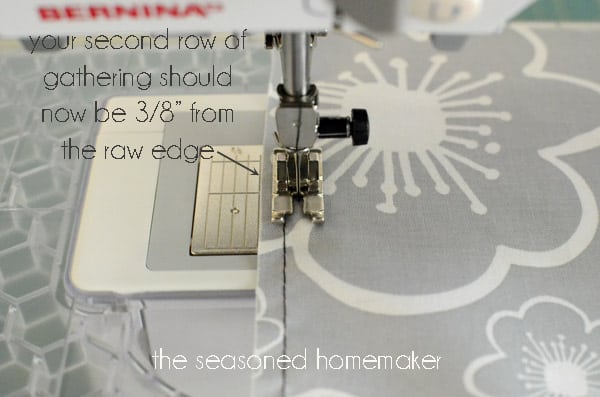
Step 9: Sew a straight stitch parallel to the first one.
It’s very important to keep your stitching lines parallel. If they get too close you will have uneven gathers. If they cross over, you will get knots and have to start over.
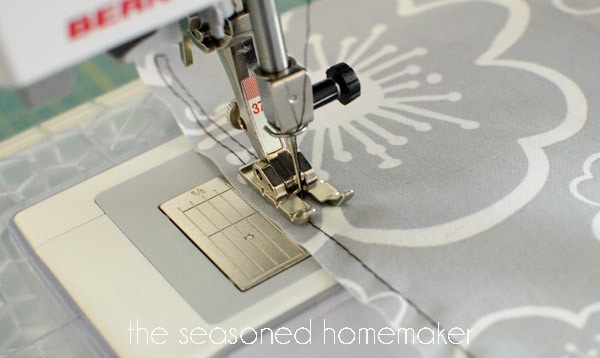
Notice the closed end where you pivoted the fabric. This will be important when you pull up the threads and gather.
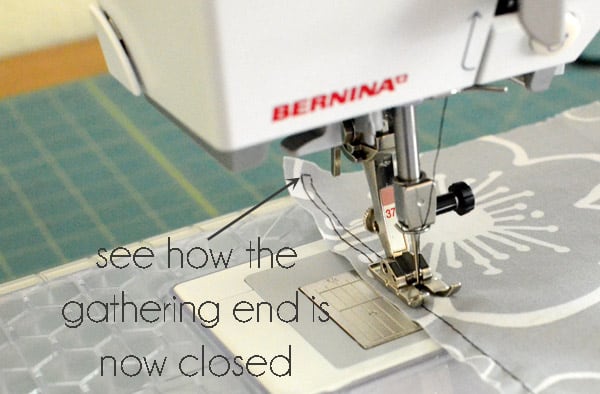
Step 10: When you reach the end, clip the threads leaving a 7″-8″ thread tail.
You will now be back where you started. Lift the needle to the up position, raise the presser foot, and pull the fabric off the machine. Leave a thread tail at least 7″-8″ long.
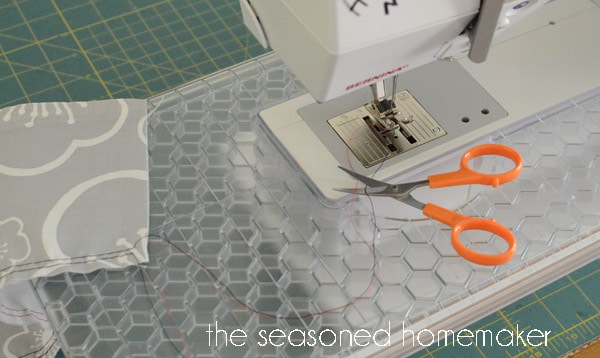
Step 11: Gather the fabric by pulling up the bobbin threads.
One of the secrets to successful gathering is to only pull the bobbin threads. This is why I like to put a different color in the bobbin when gathering. It makes it easier to remember bobbin threads only.
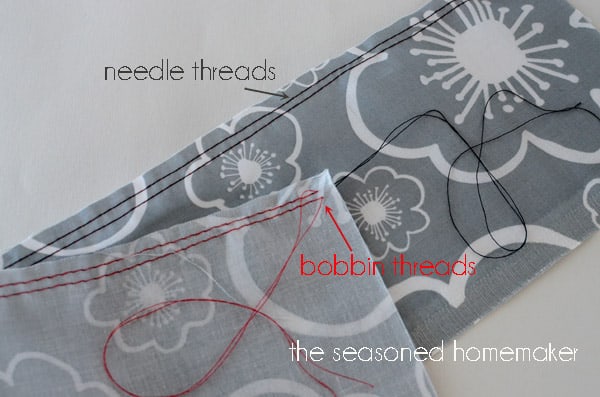
Carefully pull the two bobbin threads {red} and form even gathers. Push the gathers towards the closed end of the stitching. Be sure to pull the threads evenly for clean gathers.
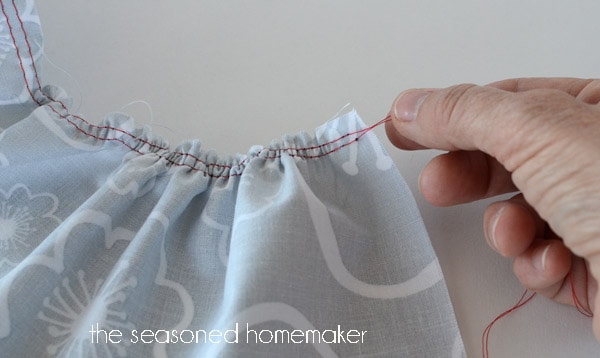
This method will make perfectly even gathers every time. Because you created a closed end, you will never pull the threads through and lose your gathers.
Press the gathers with steam and they will be ready to ruffle.
Perfect every time.
